Scott Kaufman in Scientific American:
 Toward the end of his life, the humanistic psychologist Abraham Maslow was developing new insights into self-actualization – and envisioning an even higher motivation, which he called transcendence. He referred to his theory as “Theory Z“. To Maslow, “transcenders” are regularly motivated by values and experiences that go beyond the satisfaction of basic needs and the fulfillment of one’s unique potential. These “metamotivations” include a devotion to a calling outside oneself, a seeking of “peak experiences”, and a commitment to the values of Being, or the “B-values”, including truth, goodness, beauty, justice, meaningfulness, playfulness, aliveness, excellence, simplicity, elegance, and wholeness— as ultimate goals in themselves. Maslow observed that when he asked transcenders why they do what they do and what makes their life worth living, they often cited those values. There was no further reason why they devoted so much time to their work; the values were not in service of anything else, nor were they instrumental in achieving any other goal. Maslow believed that satisfaction of the “metaneeds” are necessary “to avoid illness and to achieve fullest humanness or growth. . . . They are worth living for and dying for. Contemplating them, or fusing with them gives the greatest joy that a human being is capable of.”
Toward the end of his life, the humanistic psychologist Abraham Maslow was developing new insights into self-actualization – and envisioning an even higher motivation, which he called transcendence. He referred to his theory as “Theory Z“. To Maslow, “transcenders” are regularly motivated by values and experiences that go beyond the satisfaction of basic needs and the fulfillment of one’s unique potential. These “metamotivations” include a devotion to a calling outside oneself, a seeking of “peak experiences”, and a commitment to the values of Being, or the “B-values”, including truth, goodness, beauty, justice, meaningfulness, playfulness, aliveness, excellence, simplicity, elegance, and wholeness— as ultimate goals in themselves. Maslow observed that when he asked transcenders why they do what they do and what makes their life worth living, they often cited those values. There was no further reason why they devoted so much time to their work; the values were not in service of anything else, nor were they instrumental in achieving any other goal. Maslow believed that satisfaction of the “metaneeds” are necessary “to avoid illness and to achieve fullest humanness or growth. . . . They are worth living for and dying for. Contemplating them, or fusing with them gives the greatest joy that a human being is capable of.”
The Theory Z worldview is strikingly similar to the modern psychological research on wisdom. Wisdom is often conceptualized in psychological literature as involving an integration among cognitive, affective, and behavioral dimensions. This includes the ability to accept multiple perspectives, to respond nondefensively when challenged, to express a wide array of emotions in order to derive meaning, to critically evaluate human truths, and to become aware of the uncertain and paradoxical nature of human problems.
As clinical psychologist Deirdre Kramer puts it, “Wise people have learned to view the positive and negative and synthesize them to create a more human, more integrated sense of self, in all its frailty and vulnerability. . . . They seem able to first embrace and then transcend self-concerns to integrate their capacity for introspection with a deep and abiding concern for human relationships and generative concern for others.”
More here.
 THERE IS A CERTAIN PROFUNDITY—a profundity that can only be qualified and quantified as tautology—a deep profundity in Santu Mofokeng’s work, which thrusts the viewers, if they are willing to listen to the images carefully, into a space of timelessness. A timelessness that speaks of the elasticity of time beyond time, beyond geography. A deep time. Not in the geological, Huttonian sense of deep time, but as in time’s transience and transcendentality. A time beyond the temporality of the lived imagination. I have found myself in this time-space often when looking at and listening to Santu’s photographic series, particularly “Landscapes,” 1988–2010; “Poisoned Landscapes,” 2008; “Townships,” 1985–87; “Child-Headed Households,” 2007; “Train Church,” 1986; “Landscapes of Trauma,” 1997–2004; “Chasing Shadows,” 1996–2006; and “Ishmael,” 1984–2005.
THERE IS A CERTAIN PROFUNDITY—a profundity that can only be qualified and quantified as tautology—a deep profundity in Santu Mofokeng’s work, which thrusts the viewers, if they are willing to listen to the images carefully, into a space of timelessness. A timelessness that speaks of the elasticity of time beyond time, beyond geography. A deep time. Not in the geological, Huttonian sense of deep time, but as in time’s transience and transcendentality. A time beyond the temporality of the lived imagination. I have found myself in this time-space often when looking at and listening to Santu’s photographic series, particularly “Landscapes,” 1988–2010; “Poisoned Landscapes,” 2008; “Townships,” 1985–87; “Child-Headed Households,” 2007; “Train Church,” 1986; “Landscapes of Trauma,” 1997–2004; “Chasing Shadows,” 1996–2006; and “Ishmael,” 1984–2005.
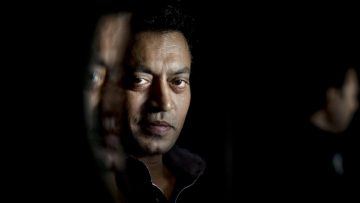 In 1986, when the director Mira Nair was scouting for her film Salaam Bombay! at the National School of Drama in New Delhi, she fixed her gaze on a young man from Jaipur. “I noticed his focus, his intensity, his very remarkable look—his hooded eyes,” she
In 1986, when the director Mira Nair was scouting for her film Salaam Bombay! at the National School of Drama in New Delhi, she fixed her gaze on a young man from Jaipur. “I noticed his focus, his intensity, his very remarkable look—his hooded eyes,” she  Although the nineteenth-century philosopher G.W.F. Hegel is known as a defender of bourgeois society and so of what came to be known after him as capitalism, I think the evidence suggests that his answer to these questions is far more negative than is widely recognized, and this in a distinctive sense that remains relevant today. I want to try to explain this counterintuitive claim. Hegel, of course, writing in Germany in the early nineteenth century, had no idea of the full scope of the industrial capitalism to come, but he certainly saw that a largely agricultural and artisanal/craft/predominantly homebound economy was changing into a wage-labor economy, and his worries about that alone are apposite. What makes him especially worth returning to in our present circumstances, however, is that while material inequalities and the resulting systematic unfairness were important to him, Hegel’s principal focus was on the experiences of ourselves and others inherent in the ordinary life required by such a productive system. These issues are often misleadingly marginalized as “psychological,” but as recent events have shown, they are crucial to the possibility of the social bonds without which no society can survive.
Although the nineteenth-century philosopher G.W.F. Hegel is known as a defender of bourgeois society and so of what came to be known after him as capitalism, I think the evidence suggests that his answer to these questions is far more negative than is widely recognized, and this in a distinctive sense that remains relevant today. I want to try to explain this counterintuitive claim. Hegel, of course, writing in Germany in the early nineteenth century, had no idea of the full scope of the industrial capitalism to come, but he certainly saw that a largely agricultural and artisanal/craft/predominantly homebound economy was changing into a wage-labor economy, and his worries about that alone are apposite. What makes him especially worth returning to in our present circumstances, however, is that while material inequalities and the resulting systematic unfairness were important to him, Hegel’s principal focus was on the experiences of ourselves and others inherent in the ordinary life required by such a productive system. These issues are often misleadingly marginalized as “psychological,” but as recent events have shown, they are crucial to the possibility of the social bonds without which no society can survive. The ongoing coronavirus disease 2019 (COVID-19) pandemic has renewed academic and clinical interest in an old vaccine,
The ongoing coronavirus disease 2019 (COVID-19) pandemic has renewed academic and clinical interest in an old vaccine, 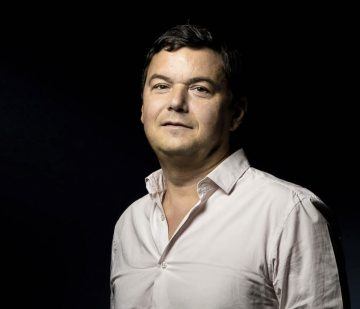 Piketty’s 753-page book Capital in the Twenty-First Century, published in 2013, sold 2.5 million copies worldwide and helped put inequality on the global agenda. But his latest, the even thicker Capital and Ideology, may prove still more influential. The book is nothing less than a global history of inequality and the stories that societies tell to justify it, from premodern India to Donald Trump’s US. It arrives just as anger about inequality (some of it generated by Piketty’s work) approaches a boiling point, and was channeled by a contender for the White House, Bernie Sanders.
Piketty’s 753-page book Capital in the Twenty-First Century, published in 2013, sold 2.5 million copies worldwide and helped put inequality on the global agenda. But his latest, the even thicker Capital and Ideology, may prove still more influential. The book is nothing less than a global history of inequality and the stories that societies tell to justify it, from premodern India to Donald Trump’s US. It arrives just as anger about inequality (some of it generated by Piketty’s work) approaches a boiling point, and was channeled by a contender for the White House, Bernie Sanders.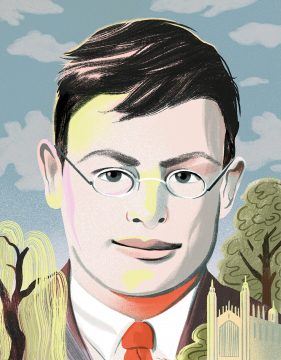 The world will never know what has happened—what a light has gone out,” the belletrist Lytton Strachey, a member of London’s Bloomsbury literary set, wrote to a friend on January 19, 1930. Frank Ramsey, a lecturer in mathematics at Cambridge University, had died that day at the age of twenty-six, probably from a liver infection that he may have picked up during a swim in the River Cam. “There was something of Newton about him,” Strachey continued. “The ease and majesty of the thought—the gentleness of the temperament.”
The world will never know what has happened—what a light has gone out,” the belletrist Lytton Strachey, a member of London’s Bloomsbury literary set, wrote to a friend on January 19, 1930. Frank Ramsey, a lecturer in mathematics at Cambridge University, had died that day at the age of twenty-six, probably from a liver infection that he may have picked up during a swim in the River Cam. “There was something of Newton about him,” Strachey continued. “The ease and majesty of the thought—the gentleness of the temperament.” Last week,
Last week, 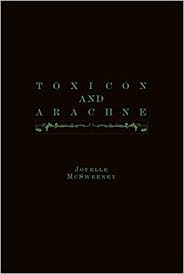 In 2011, McSweeney coined the term
In 2011, McSweeney coined the term 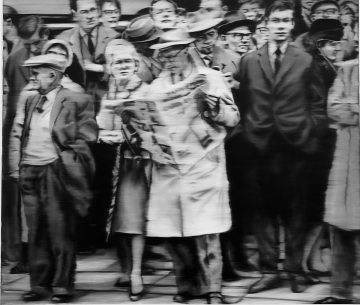
 Toward the end of his life, the humanistic psychologist Abraham Maslow was developing
Toward the end of his life, the humanistic psychologist Abraham Maslow was developing 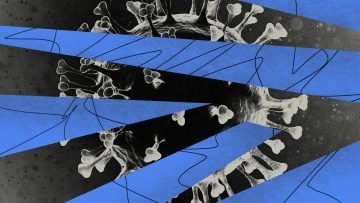 Why do some people
Why do some people  The virus has punctured the dream that any built item in our world just wondrously appears, in our stores or on our screens. Instead, like the casing coming off an enormous clock, we see how our way of life relies on millions of people, working together. Like cogs in that clock, tipping over the edge of a cliff.
The virus has punctured the dream that any built item in our world just wondrously appears, in our stores or on our screens. Instead, like the casing coming off an enormous clock, we see how our way of life relies on millions of people, working together. Like cogs in that clock, tipping over the edge of a cliff. When major decisions must be made amid high scientific uncertainty, as is the case with
When major decisions must be made amid high scientific uncertainty, as is the case with